Impact of Arsenic Stress on the Antioxidant System and Photosystem of Arthrospira platensis
Simple Summary
Abstract
1. Introduction
2. Materials and Methods
2.1. Strain and Cultivate Condition
2.2. Determination of A. platensis Growth Curve
2.3. Determination of Active Substances in A. platensis Cells
2.4. Determination of the Photosynthetic System
2.5. Determination of the Antioxidant System in A. platensis Under As3+ Stress
2.6. Extraction of RNA, Synthesis of cDNA, and Transcriptome Sequencing
2.7. qPCR Validation
2.8. Data Processing and Analysis
3. Results
3.1. The Growth and Biological Activity of A. platensis
3.2. The Photosynthetic System of A. platensis
3.3. The Antioxidant System of A. platensis
3.4. Transcriptome Sequencing Analysis and Quantitative Analysis of Key Genes
3.4.1. Transcriptome Sequencing Results
3.4.2. Effects of As3+ Stress on Key Genes of the Oxidative Phosphorylation Pathway and the Phaeophytin-a Metabolism Pathway
4. Discussion
4.1. Response Pathways of A. platensis Photosystems to As3+ Stress
4.2. Response Pathways of A. platensis Antioxidant System to As3+ Stress
4.3. Mechanism of A. platensis’s Uptake and Transformation of As3+
5. Conclusions
Supplementary Materials
Author Contributions
Funding
Institutional Review Board Statement
Informed Consent Statement
Data Availability Statement
Conflicts of Interest
References
- Li, C.; Bundschuh, J.; Gao, X.; Li, Y.; Zhang, X.; Luo, W.; Pan, Z. Occurrence and Behavior of Arsenic in Groundwater-Aquifer System of Irrigated Areas. Sci. Total. Environ. 2022, 838, 155991. [Google Scholar] [CrossRef] [PubMed]
- Yan, G.; Chen, X.; Du, S.; Deng, Z.; Wang, L.; Chen, S. Genetic Mechanisms of Arsenic Detoxification and Metabolism in Bacteria. Curr. Genet. 2018, 65, 329–338. [Google Scholar] [CrossRef] [PubMed]
- Rahman, M.A.; Hasegawa, H.; Lim, R.P. Bioaccumulation, Biotransformation and Trophic Transfer of Arsenic in the Aquatic Food Chain. Environ. Res. 2012, 116, 118–135. [Google Scholar] [CrossRef] [PubMed]
- Zhang, W.; Miao, A.-J.; Wang, N.-X.; Li, C.; Sha, J.; Jia, J.; Alessi, D.S.; Yan, B.; Ok, Y.S. Arsenic Bioaccumulation and Biotransformation in Aquatic Organisms. Environ. Int. 2022, 163, 107221. [Google Scholar] [CrossRef]
- Allevato, E.; Stazi, S.R.; Marabottini, R.; D’Annibale, A. Mechanisms of Arsenic Assimilation by Plants and Countermeasures to Attenuate Its Accumulation in Crops Other than Rice. Ecotoxicol. Environ. Saf. 2019, 185, 109701. [Google Scholar] [CrossRef]
- Gasic, K.; Korban, S.S. Transgenic Indian mustard (Brassica juncea) plants expressing an Arabidopsis phytochelatin synthase (AtPCS1) exhibit enhanced As and Cd tolerance. Plant Mol. Biol. 2007, 64, 361–369. [Google Scholar] [CrossRef]
- Chen, Y.; Hua, C.-Y.; Jia, M.-R.; Fu, J.-W.; Liu, X.; Han, Y.-H.; Liu, Y.; Rathinasabapathi, B.; Cao, Y.; Ma, L.Q. Heterologous Expression of Pteris Vittata Arsenite Antiporter PvACR3;1 Reduces Arsenic Accumulation in Plant Shoots. Environ. Sci. Technol. 2017, 51, 10387–10395. [Google Scholar] [CrossRef]
- Han, R. Study on the Tolerance and Absorption-Metabolism Mechanism of A. platensis to Arsenic. Master’s Thesis, Inner Mongolia University of Science and Technology, Baotou, China, 2020. [Google Scholar] [CrossRef]
- Singh, N.K.; Raghubanshi, A.S.; Upadhyay, A.K.; Rai, U.N. Arsenic and Other Heavy Metal Accumulation in Plants and Algae Growing Naturally in Contaminated Area of West Bengal, India. Ecotoxicol. Environ. Saf. 2016, 130, 224–233. [Google Scholar] [CrossRef]
- Du, J. Research on the Physiological Responses and Defense Mechanisms of A. platensis Under As3+ Stress. Master’s Thesis, Inner Mongolia University of Science and Technology, Baotou, China, 2023. [Google Scholar] [CrossRef]
- Rahnama, H.; Ebrahimzadeh, H. The Effect of NaCl on Antioxidant Enzyme Activities in Potato Seedlings. Biol. plant. 2005, 49, 93–97. [Google Scholar] [CrossRef]
- Jester, B.W.; Zhao, H.; Gewe, M.; Adame, T.; Perruzza, L.; Bolick, D.T.; Agosti, J.; Khuong, N.; Kuestner, R.; Gamble, C.; et al. Development of A. platensis for the Manufacture and Oral Delivery of Protein Therapeutics. Nat. Biotechnol. 2022, 40, 956–964. [Google Scholar] [CrossRef]
- Wang, H.; Hao, W.; Yang, L.; Li, T.; Zhao, C.; Yan, P.; Wei, S. Procyanidin B2 Alleviates Heat-Induced Oxidative Stress through the Nrf2 Pathway in Bovine Mammary Epithelial Cells. IJMS 2022, 23, 7769. [Google Scholar] [CrossRef] [PubMed]
- Wang, Y.; Wang, S.; Xu, P.; Liu, C.; Liu, M.; Wang, Y.; Wang, C.; Zhang, C.; Ge, Y. Review of Arsenic Speciation, Toxicity and Metabolism in Microalgae. Rev. Environ. Sci. Biotechnol. 2015, 14, 427–451. [Google Scholar] [CrossRef]
- Yang, Y.-P.; Zhang, H.-M.; Yuan, H.-Y.; Duan, G.-L.; Jin, D.-C.; Zhao, F.-J.; Zhu, Y.-G. Microbe Mediated Arsenic Release from Iron Minerals and Arsenic Methylation in Rhizosphere Controls Arsenic Fate in Soil-Rice System after Straw Incorporation. Environ. Pollut. 2018, 236, 598–608. [Google Scholar] [CrossRef] [PubMed]
- Garbinski, L.D.; Rosen, B.P.; Chen, J. Pathways of Arsenic Uptake and Efflux. Environ. Int. 2019, 126, 585–597. [Google Scholar] [CrossRef] [PubMed]
- van Keulen, G.; Meijer, W.G. Improved Recovery of DNA from Polyacrylamide Gels after in Situ DNA Footprinting. J. Microbiol. Methods 2003, 54, 289–291. [Google Scholar] [CrossRef]
- Govindjee, S.A. On the Relation between the Kautsky Effect (Chlorophyll a Fluorescence Induction) and Photosystem II: Basics and Applications of the OJIP Fluorescence Transient. J. Photochem. Photobiol. B 2011, 104, 236–257. [Google Scholar] [CrossRef]
- Zhen, N.; Zeng, X.; Wang, H.; Yu, J.; Pan, D.; Wu, Z.; Guo, Y. Effects of Heat Shock Treatment on the Survival Rate of Lactobacillus Acidophilus after Freeze-Drying. Food Res. Int. 2020, 136, 109507. [Google Scholar] [CrossRef]
- Lingg, N.; Öhlknecht, C.; Fischer, A.; Mozgovicz, M.; Scharl, T.; Oostenbrink, C.; Jungbauer, A. Proteomics Analysis of Host Cell Proteins after Immobilized Metal Affinity Chromatography: Influence of Ligand and Metal Ions. J. Chromatogr. A 2020, 1633, 461649. [Google Scholar] [CrossRef]
- Feng, J.; Shi, Q.; Wang, X. Effects of Exogenous Silicon on Photosynthetic Capacity and Antioxidant Enzyme Activities in Chloroplast of Cucumber Seedlings Under Excess Manganese. Agric. Sci. China 2009, 8, 40–50. [Google Scholar] [CrossRef]
- Touzout, N.; Ainas, M.; Alloti, R.; Boussahoua, C.; Douma, A.; Hassein-Bey, A.H.; Brara, Z.; Tahraoui, H.; Zhang, J.; Amrane, A. Unveiling the Impact of Thiophanate-Methyl on Arthrospira Platensis: Growth, Photosynthetic Pigments, Biomolecules, and Detoxification Enzyme Activities. Front. Biosci. (Landmark Ed) 2023, 28, 264. [Google Scholar] [CrossRef]
- Lee, J.-W.; Lee, E.-J. Regulation and Function of the Salmonella MgtC Virulence Protein. J. Microbiol. 2015, 53, 667–672. [Google Scholar] [CrossRef] [PubMed]
- Kamohara, R.; Deguchi, S.; Miyoshi, M.; Shen, Z.-Q. Time Variation of SiO Masers in VX Sagittarii over an Optically Quiescent Phase. Publ. Astron. Soc. Jpn. 2005, 57, 341–345. [Google Scholar] [CrossRef]
- Wang, S.; Zhang, D.; Pan, X. Effects of Arsenic on Growth and Photosystem II (PSII) Activity of Microcystis Aeruginosa. Ecotoxicol. Environ. Saf. 2012, 84, 104–111. [Google Scholar] [CrossRef] [PubMed]
- Misra, A.N.; Srivastava, A.; Strasser, R.J. Utilization of Fast Chlorophyll a Fluorescence Technique in Assessing the Salt/Ion Sensitivity of Mung Bean and Brassica Seedlings. J. Plant Physiol. 2001, 158, 1173–1181. [Google Scholar] [CrossRef]
- Agarwal, R.; Rane, S.S.; Sainis, J.K. Effects of (60) Co Gamma Radiation on Thylakoid Membrane Functions in Anacystis Nidulans. J. Photochem. Photobiol. B 2008, 91, 9–19. [Google Scholar] [CrossRef]
- Kuwabara, T.; Murata, N. Inactivation of Photosynthetic Oxygen Evolution and Concomitant Release of Three Polypeptides in the Photosystem II Particles of Spinach Chloroplasts. Plant Cell Physiol. 1982, 23, 533–539. [Google Scholar] [CrossRef]
- Tomaselli, L.; Boldrini, G.; Margheri, M. Physiological Behaviour of Arthrospira (A. platensis) Maxima during Acclimation to Changes in Irradiance. J. Appl. Phycol. 1997, 9, 37–43. [Google Scholar] [CrossRef]
- Gao, J.; Zhao, L.; Wang, J.; Zhang, L.; Zhou, D.; Qu, J.; Wang, H.; Yin, M.; Hong, J.; Zhao, W. C-Phycocyanin Ameliorates Mitochondrial Fission and Fusion Dynamics in Ischemic Cardiomyocyte Damage. Front. Pharmacol. 2019, 10, 733. [Google Scholar] [CrossRef]
- Bhayani, K.; Mitra, M.; Ghosh, T.; Mishra, S. C-Phycocyanin as a Potential Biosensor for Heavy Metals like Hg2+ in Aquatic Systems. RSC Adv. 2016, 6, 111599–111605. [Google Scholar] [CrossRef]
- Chi, Z.; Hong, B.; Tan, S.; Wu, Y.; Li, H.; Lu, C.-H.; Li, W. Impact Assessment of Heavy Metal Cations to the Characteristics of Photosynthetic Phycocyanin. J. Hazard. Mater. 2020, 391, 122225. [Google Scholar] [CrossRef]
- Lyu, P.; Li, H.; Zheng, X.; Zhang, H.; Wang, C.; Qin, Y.; Xia, B.; Wang, D.; Xu, S.; Zhuang, X. Oxidative Stress of Microcystis Aeruginosa Induced by Algicidal Bacterium Stenotrophomonas sp. KT48. Appl. Microbiol. Biotechnol. 2022, 106, 4329–4340. [Google Scholar] [CrossRef] [PubMed]
- Xie, Y.; Mao, Y.; Lai, D.; Zhang, W.; Shen, W. H2 Enhances Arabidopsis Salt Tolerance by Manipulating ZAT10/12-Mediated Antioxidant Defence and Controlling Sodium Exclusion. PLoS ONE 2012, 7, e49800. [Google Scholar] [CrossRef] [PubMed]
- Xu, S.; Zhu, S.; Jiang, Y.; Wang, N.; Wang, R.; Shen, W.; Yang, J. Hydrogen-Rich Water Alleviates Salt Stress in Rice during Seed Germination. Plant Soil. 2013, 370, 47–57. [Google Scholar] [CrossRef]
- Pál, M.; Szalai, G.; Janda, T. Speculation: Polyamines Are Important in Abiotic Stress Signaling. Plant. Sci. 2015, 237, 16–23. [Google Scholar] [CrossRef]
- Agrawal, S.B.; Agrawal, M.; Lee, E.H.; Kramer, G.F.; Pillai, P. Changes in Polyamine and Glutathione Contents of a Green Alga, Chlorogonium Elongatum (Dang) France Exposed to Mercury. Environ. Exp. Bot. 1992, 32, 145–151. [Google Scholar] [CrossRef]
- Nowicka, B. Heavy Metal–Induced Stress in Eukaryotic Algae—Mechanisms of Heavy Metal Toxicity and Tolerance with Particular Emphasis on Oxidative Stress in Exposed Cells and the Role of Antioxidant Response. Environ. Sci. Pollut. Res. 2022, 29, 16860–16911. [Google Scholar] [CrossRef]
- Begum, H.; Yusoff, F.M.; Banerjee, S.; Khatoon, H.; Shariff, M. Availability and Utilization of Pigments from Microalgae. Crit. Rev. Food Sci. Nutr. 2015, 56, 2209–2222. [Google Scholar] [CrossRef]
- Strasser, R.J.; Tsimilli-Michael, M.; Qiang, S.; Goltsev, V. Simultaneous in Vivo Recording of Prompt and Delayed Fluorescence and 820-Nm Reflection Changes during Drying and after Rehydration of the Resurrection Plant Haberlea Rhodopensis. Biochim. Biophys. Acta. Bioenerg. 2010, 1797, 1313–1326. [Google Scholar] [CrossRef]
- Kula-Maximenko, M.; Zieliński, K.J.; Ślesak, I. The Role of Selected Wavelengths of Light in the Activity of Photosystem II in Gloeobacter Violaceus. IJMS 2021, 22, 4021. [Google Scholar] [CrossRef]
Disclaimer/Publisher’s Note: The statements, opinions and data contained in all publications are solely those of the individual author(s) and contributor(s) and not of MDPI and/or the editor(s). MDPI and/or the editor(s) disclaim responsibility for any injury to people or property resulting from any ideas, methods, instructions or products referred to in the content. |
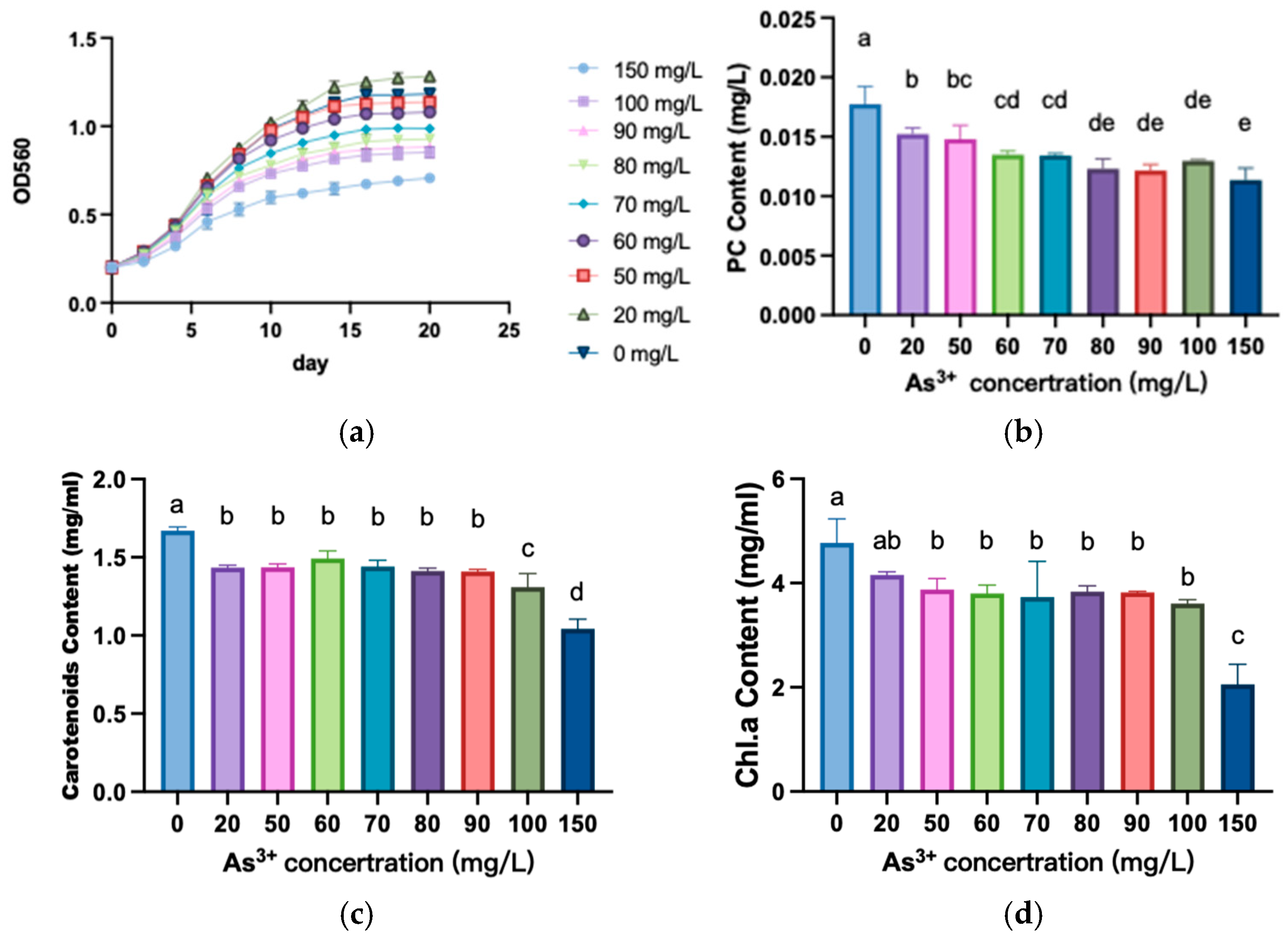
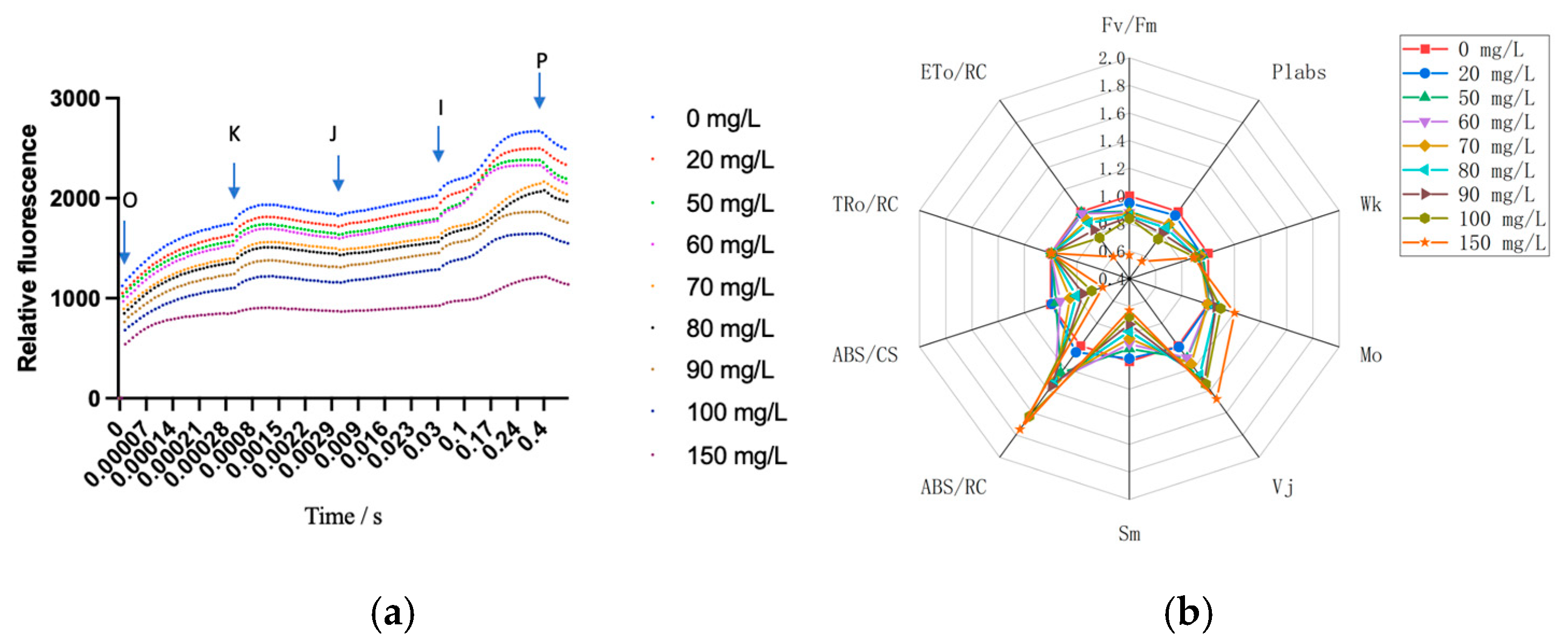
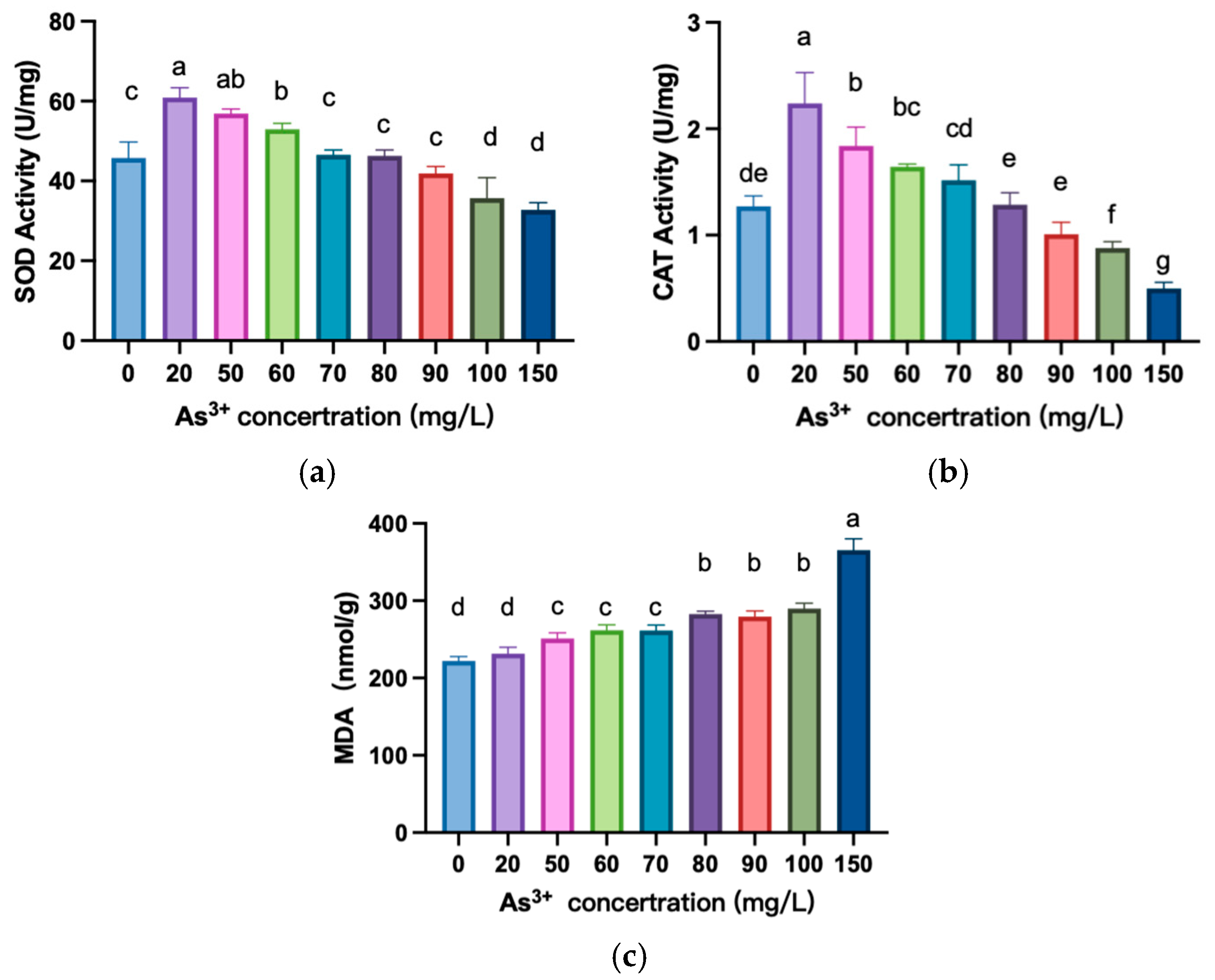
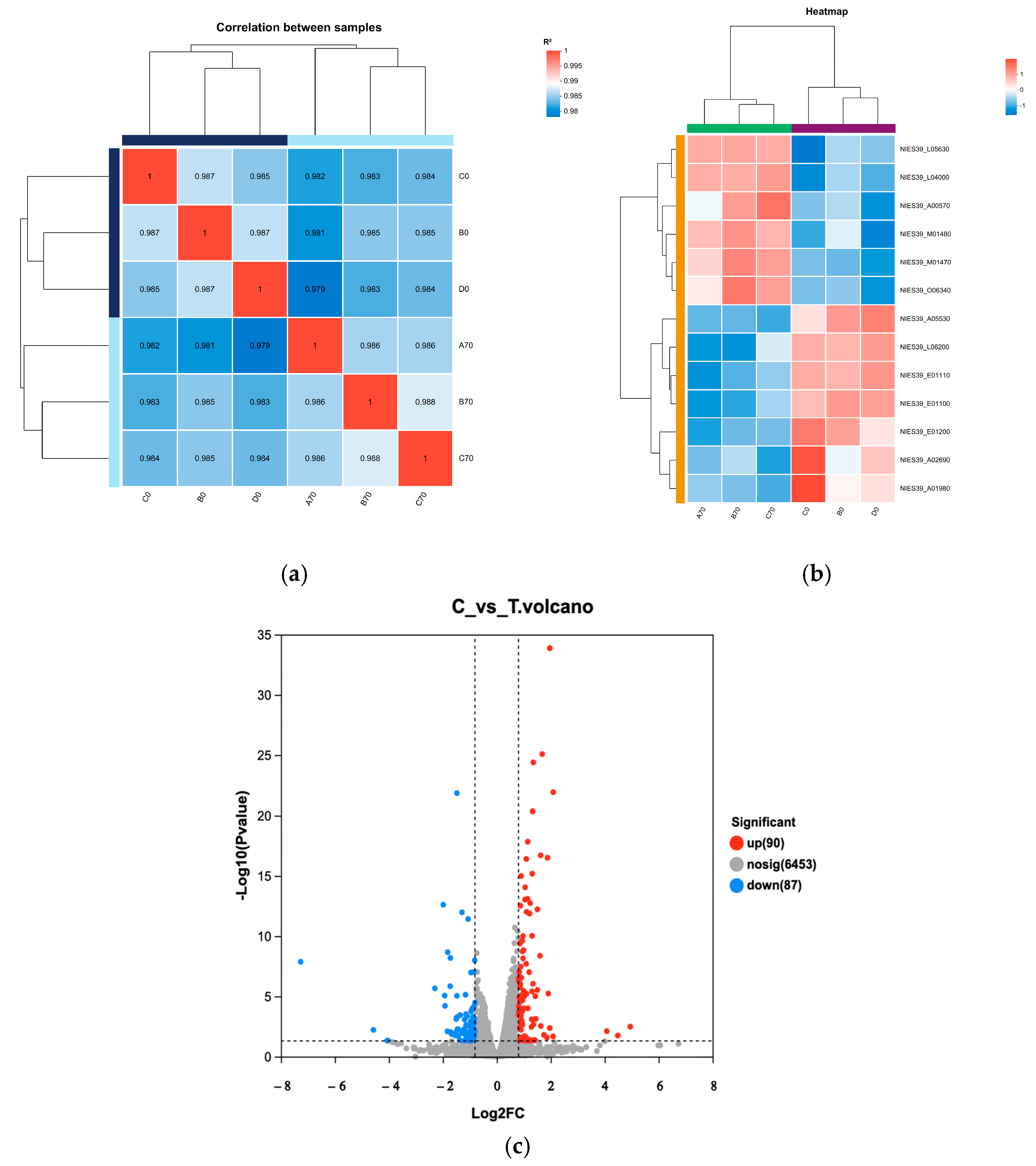
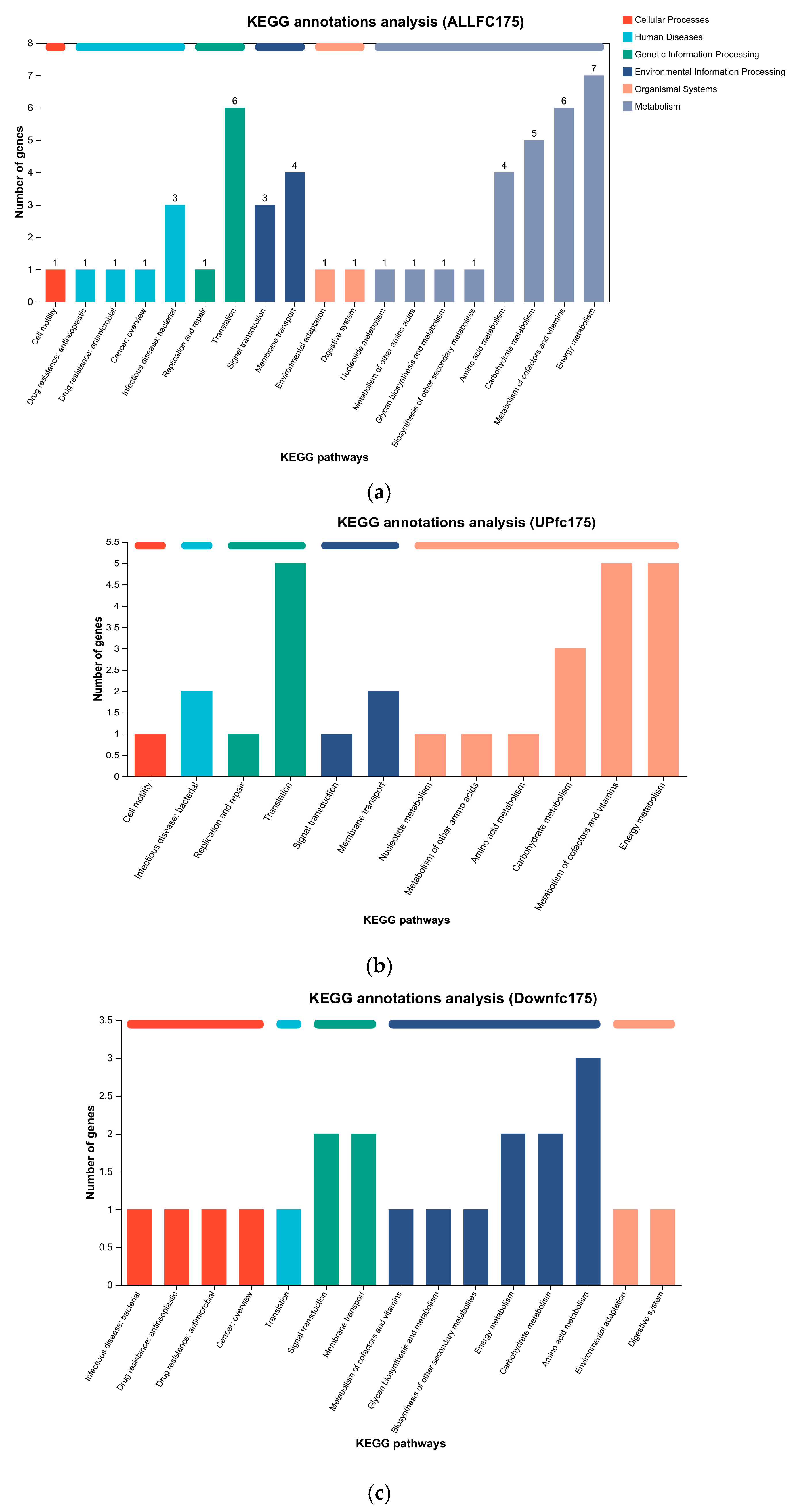
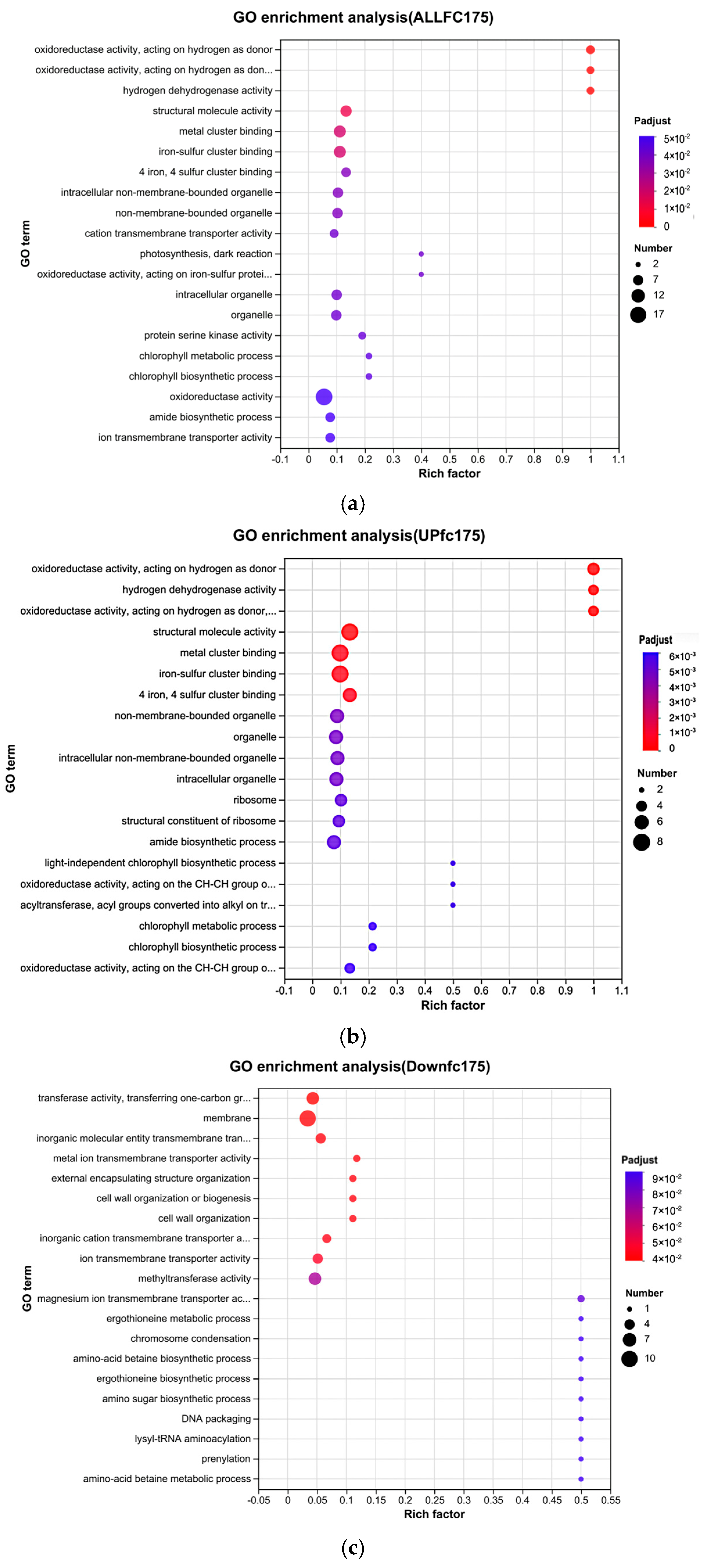


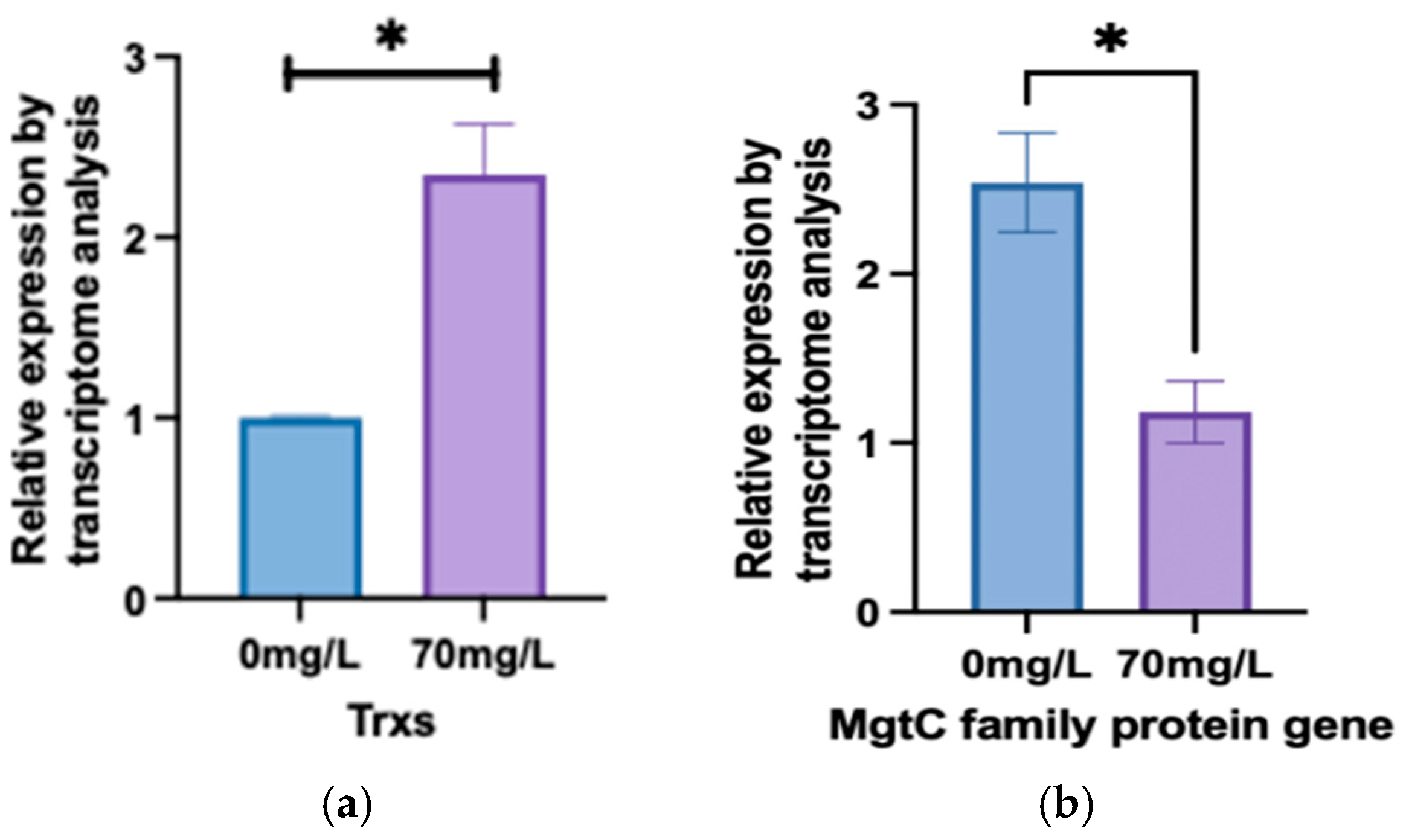
© 2024 by the authors. Licensee MDPI, Basel, Switzerland. This article is an open access article distributed under the terms and conditions of the Creative Commons Attribution (CC BY) license (https://creativecommons.org/licenses/by/4.0/).
Share and Cite
Liu, J.; Du, J.; Wu, D.; Ji, X.; Zhao, X. Impact of Arsenic Stress on the Antioxidant System and Photosystem of Arthrospira platensis. Biology 2024, 13, 1049. https://doi.org/10.3390/biology13121049
Liu J, Du J, Wu D, Ji X, Zhao X. Impact of Arsenic Stress on the Antioxidant System and Photosystem of Arthrospira platensis. Biology. 2024; 13(12):1049. https://doi.org/10.3390/biology13121049
Chicago/Turabian StyleLiu, Jiawei, Jie Du, Di Wu, Xiang Ji, and Xiujuan Zhao. 2024. "Impact of Arsenic Stress on the Antioxidant System and Photosystem of Arthrospira platensis" Biology 13, no. 12: 1049. https://doi.org/10.3390/biology13121049
APA StyleLiu, J., Du, J., Wu, D., Ji, X., & Zhao, X. (2024). Impact of Arsenic Stress on the Antioxidant System and Photosystem of Arthrospira platensis. Biology, 13(12), 1049. https://doi.org/10.3390/biology13121049




